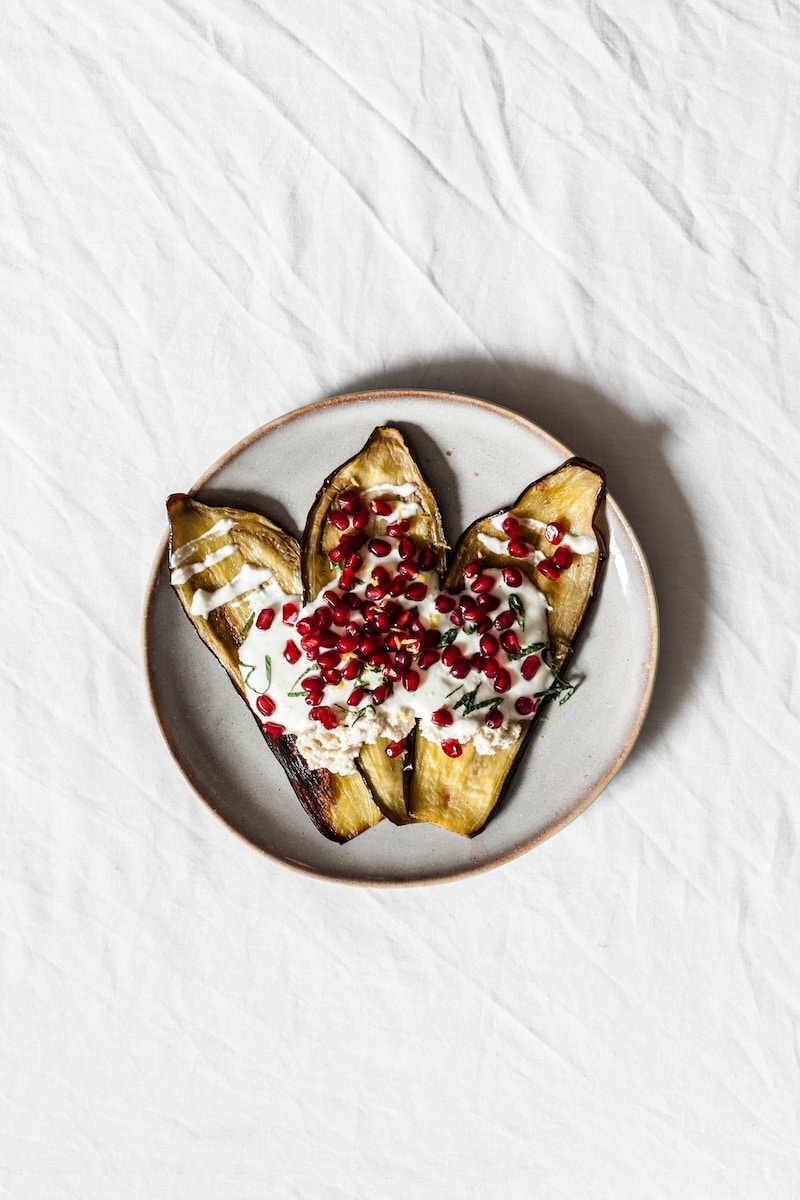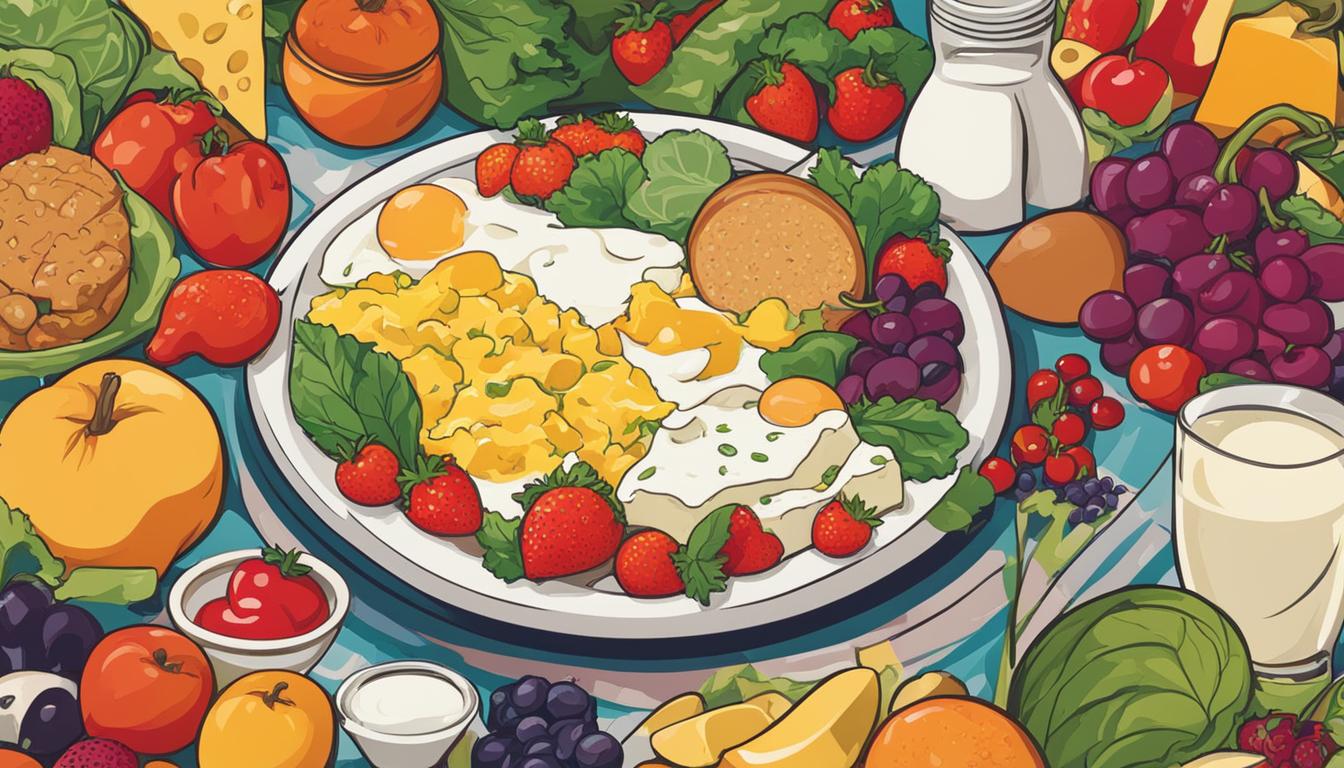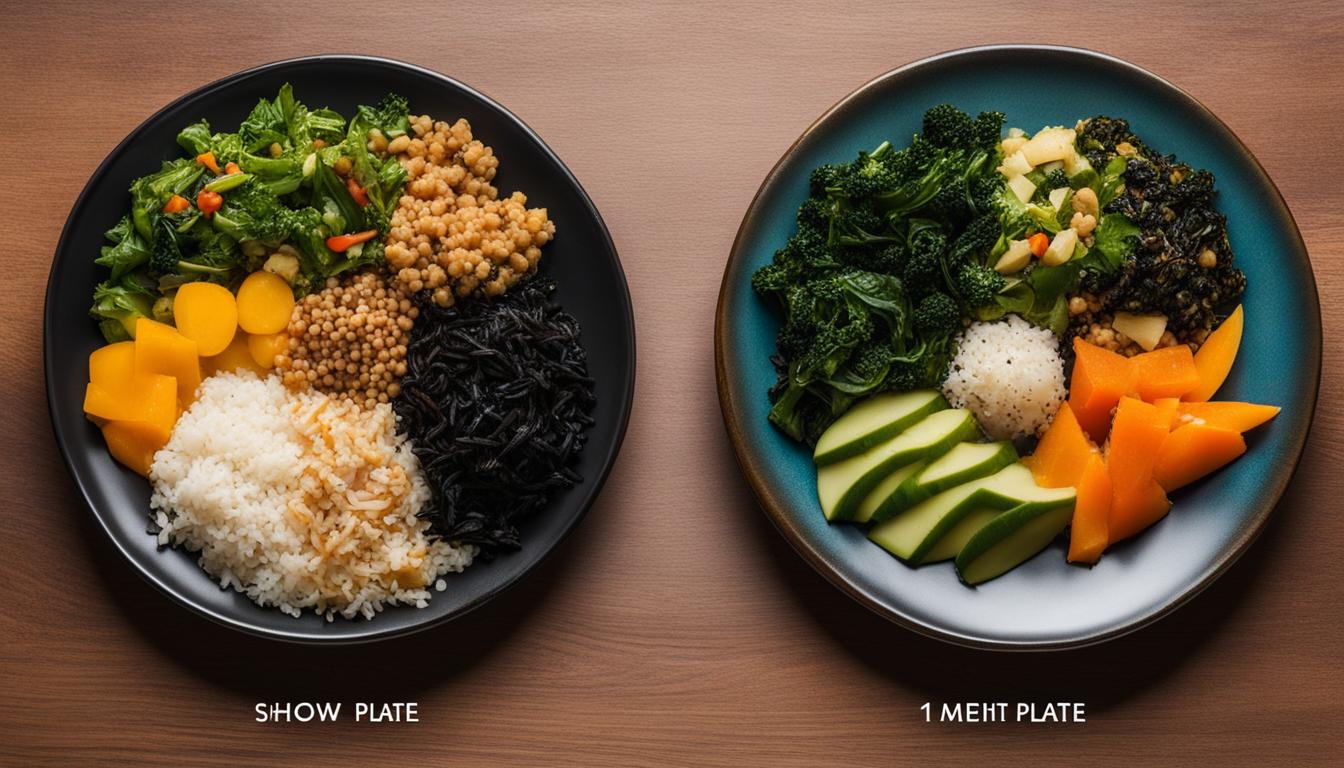A Clash of Culinary Titans: Brief Overview of FODMAP and Gluten-Free Diets
The world of nutrition is a battleground, replete with warring factions shouting their credos from rooftops. One such enigmatic enmity exists between the low-FODMAP diet and the gluten-free diet.
I am here to unmask these pretenders, to shine a spotlight on their claims, contradictions, and true identities. FODMAP—an acronym for Fermentable Oligo-, Di-, Mono-saccharides And Polyols—refers to a group of short-chain carbohydrates that some unfortunate stomachs find difficult to digest.
A low-FODMAP diet eliminates or restricts these troublemakers in an attempt to bring peace to the intestinal kingdom. Then there’s gluten-free, the dietary darling of our times.
This regiment says “no” to gluten—a protein found in wheat, barley, rye and triticale—often due to medical conditions like celiac disease or non-celiac gluten sensitivity that have declared war on this otherwise innocuous component.
The Paradoxical Puzzle: Why the Confusion? Unravelling the Dietary Knot
Why does confusion reign supreme in this dietary realm? Why does every Tom, Dick and Harry stare blankly when confronted with the differences between these two diets? Well, it’s not surprising given their labyrinthine complexity. They are as similar as they are different; as clear as mud; complementary yet contradictory – hence my rant about this vexing vortex! Both diets restrict certain foods because they cause digestive havoc for their respective followers. But while one banishes carbohydrates with jargonistic names from your plate (FODMAPs), the other eradicates a protein (gluten). And here’s the rub: some high FODMAP foods are gluten-free and vice versa. This paradoxical overlap causes confusion, chaos, and colossal consternation among dieters trying to discern their dietary path. Oh, what a tangled web we weave when first we practise to eat healthily!
The FODMAP Frontier – An Exploration into the Unknown
The Unseen Universe Within – Decoding FODMAPs
In the complex cosmos of dietary regimes, few are as perplexing and enigmatic as the low-FODMAP diet. So what on earth is this strange acronym?
Prepare yourself for a hefty dose of scientific jargon, my friends! The term ‘FODMAP’ stands for Fermentable Oligosaccharides, Disaccharides, Monosaccharides And Polyols.
In layman’s terms? They’re a group of short-chain carbohydrates that some unfortunate individuals find hard to digest.
These molecules make their way to your large intestine where they’re promptly fermented by gut bacteria causing all sorts of digestive chaos. If you’re like me and enjoy indulging in your fair share of onions, apples, milk and bread (no judgment here), you might be shocked to hear that these seemingly innocent foods are packed with these hidden FODMAPs!
Deceptive little critters they are! It’s enough to make one seriously reconsider their dietary life choices.
Beyond Bellyaches – The FODMAP Connection with IBS
Now you might be questioning: who in the world would willingly take up this alien-sounding diet? Well, let me enlighten you. Those persistently plagued by Irritable Bowel Syndrome (IBS) may find solace in following a low-FODMAP regimen.
IBS isn’t just about an occasional upset tummy or erratic bowel movements; it’s a chronic disorder causing abdominal pain exacerbated by stress or certain foods (like those sneaky FODMAPs). But don’t think it stops at IBS—oh no!
Other digestive disorders such as inflammatory bowel disease (IBD) and small intestinal bacterial overgrowth (SIBO) can also benefit from this diet. Thank the digestive deities for the small mercies of dietary science!
Navigating the Murky Waters: The FODMAP Food List Unveiled
So if you’re considering embarking on this dietary adventure, or perhaps your healthcare provider has gently nudged you in that direction, you’re probably wondering what’s on the menu and what’s not. Let me break it down for you. High-FODMAP foods include a range of fruits like apples and watermelons, vegetables like asparagus and onions, grains like wheat and rye, dairy products and even sweeteners (so long, honey!)
But fear not! The low-FODMAP food list is far from barren.
You can still feast on foods like bananas, carrots, oats, lactose-free dairy products and sweeteners such as maple syrup (pancakes are still on!). It requires some careful navigation but armed with knowledge (and perhaps a handy food list), one can master this low-FODMAP maze!
Going Gluten-Free – More Than Just a Trend
The Much-Maligned Protein: Unmasking Gluten
In the dietary realm, gluten has been maligned and ostracized, treated almost like an outcast. But why does this protein, ubiquitous in wheat, barley and rye; humble in its origin yet influential in its function have such a dastardly reputation? Gluten is the binding agent that gives our breads their enjoyable elasticity and our pastries their desirable fluffiness.
Nevertheless, for some individuals, this seemingly innocent protein can trigger a physiological pandemonium. The anathema towards gluten is neither unfounded nor unreasoned.
It’s not about following some fad or jumping on the bandwagon of the latest dietary trend. For those who experience adverse reactions upon consuming gluten, going gluten-free is less about choice and more about necessity.
The Dark Underbelly of Gluten: Celiac Disease, Wheat Allergy, and Non-Celiac Gluten Sensitivity
Gluten becomes malevolent when it incites immune responses in certain individuals leading to conditions such as celiac disease or wheat allergy; or provokes digestive distress as seen in non-celiac gluten sensitivity (NCGS). Celiac disease is an autoimmune disorder where ingestion of gluten leads to damage to the small intestine lining. It’s no laughing matter – untreated celiac disease can bring about a plethora of health complications ranging from osteoporosis to infertility!
Wheat allergy involves an allergic reaction to proteins present in wheat – one of which could be gluten – triggering symptoms like itching or difficulty breathing. Don’t mistake it for celiac though; these are two disparate conditions!
And let’s not forget NCGS – where symptoms similar to those experienced by celiac patients manifest without any observable gut damage. An enigma, indeed!
The Labyrinth of Gluten-Free Living: Navigating Through the Diet
Going gluten-free is not a walk in the park. With gluten lurking in a wide range of food products, one needs to be an expert detective and navigator to successfully traverse this dietary landscape.
It’s not just about sidestepping bread or pasta; gluten can hide in more surreptitious places such as sauces, dressings, and even certain medications! Oh yes, it’s that crafty!
Apart from being vigilant about food labels and restaurant menus, individuals adhering to a gluten-free diet also need to confront the challenge of ensuring balanced nutrition. Gluten-bearing grains are rich sources of fiber and vitamins that need suitable substitutes when omitted from diet.
And no – surviving on a restrictive diet doesn’t have to equate with culinary ennui! With creativity in the kitchen and smart ingredient swaps, flavorsome gluten-free meals are within arm’s reach.
Finding Common Ground: The Shared Edibles in Both Diets
Opinions are like belly buttons, everyone has one, but not all make sense. The same can be said about diets. When it comes to the diets that have taken the world by storm – the Low-FODMAP and gluten-free ones, they are as different as chalk and cheese.
But amidst this dietary divergence, there exists a surprising amount of overlap. Here’s where I raise my eyebrows at those who say these diets are poles apart.
Eggs, meat, fish, hard cheeses – these are proteins you can freely consume on both diets with no fear of discomfort or compromising your health! And let’s not forget most vegetables and fruits which fall into the ‘safe zone’.
Dietary Divergence: Celebrating Differences in Each Diet
Now onto my favorite part – their differences! Spoiler alert – they’re not twins!
A gluten-free diet is NOT a low-FODMAP diet and vice versa. This is where I usually roll my eyes at those misinformed souls who lump them together.
In the realm of FODMAPs, lactose is a foe while for gluten-free dieters; it’s an ally provided there’s no secondary lactose intolerance. Gluten-centric grains like wheat and barley get a hard pass in a gluten-free diet but can occasionally sneak into a low-FODMAP one under certain conditions.
Here’s an unpopular opinion for you- despite their differences; these diets don’t deserve all the flak they get. They’re not fads trying to trick you into buying expensive foods or supplements- they’re medical necessities for some people!
So whether you’re searching for commonality or difference in these two dietary regimens, remember to delve deeper into their complexities before making swift judgments. It’s crucial to understand that both diets serve unique purposes and are not interchangeable – a fact we ought to respect and celebrate.
The Art of Reading Food Labels for Low-FODMAP Products: Not All Acronyms Are Created Equal
I’ve got a bone to pick with the lackluster state of food label transparency in our modern era. For those navigating the murky waters of Low-FODMAP diets, reading food labels is more akin to decrypting hieroglyphics than making an informed dietary choice. To make matters worse, manufacturers are stumbling over themselves in their rush to slap buzz-worthy “health” terms all over their packaging.
FODMAPs (Fermentable Oligosaccharides, Disaccharides, Monosaccharides And Polyols) can be a mouthful to say and an absolute nightmare to identify on a label. Look out for sneaky FODMAPs disguised as ‘healthy’ additives like fructo-oligosaccharides (FOS), chicory root, or inulin – these are high FODMAP ingredients masquerading as beneficial dietary fiber.
Unscrambling Labels for Gluten-Free Items: A Glutenous Obsession with Obscurity
Now let’s talk about gluten-free labels. That innocuous little “GF” symbol we see brandished about on everything from cupcakes to quinoa?
It’s become the darling emblem of the health-food industry yet it throws shoppers into a whirlwind of confusion. Gluten-free certainly doesn’t always mean healthy!
Don’t get me wrong; it’s fantastic that our friends with Celiac disease and non-celiac gluten sensitivity have options aplenty these days. However, consumers need more than just two letters on a package—how about full disclosure?
Don’t be lulled into complacency by that tiny GF stamp; scrutinize your ingredients list! Check for hidden gluten sources like malt, brewer’s yeast, and even the nebulous “natural flavors.”
The challenge is to navigate through this superfluous fluff and excavate the truth from these labels. It’s high time we insist on clarity amid the cacophony of confusing health claims.
The Audacious Art of Cooking Low-FODMAP Meals That Don’t Skimp on Flavor
One might surmise that adhering to a low-FODMAP diet shackles you to a life of insipid and bland meals; however, I vehemently disagree! Frankly, it’s an audacious adventure into the culinary world, demanding creativity and experimentation. You essentially become an alchemist in your kitchen, transmutating seemingly ordinary ingredients into flavorful masterpieces.
The exclusion of certain foods activates the adventurous chef within us all, beckoning us to delve into overlooked food groups and experiment with exotic spices. The key lies in understanding that it is not about repressing your gastronomic journey but rather rerouting it.
Quinoa takes over where wheat left off; zucchinis transform magically into noodles; and almond milk gracefully replaces cow’s milk. As for garlic and onion, the quintessential flavor enhancers synonymous with good cooking?
Their absence need not leave your dishes tasteless when spices like turmeric, cumin, or ginger can infuse captivating aromas and flavors. It’s a playground for your palate!
Crafting Delicious and Nutritious Gluten-Free Dishes: An Epicurean Extravaganza
On the other hand, crafting gluten-free dishes is no less an epicurean extravaganza! The common misconception portrays a gluten-free diet as an ascetic sacrifice at the altar of health. But let me tell you – this couldn’t be further from the truth!
Nature generously bestows upon us myriads of grains that are naturally devoid of this contentious protein – rice in its many varieties (black forbidden rice anyone?), millet with its delicate flavor profile along with amaranth – the ancient grain of the Aztecs. And what about that morning toast or sandwich, you ask?
Fear not! Gluten-free flour alternatives are aplenty – from almond and coconut flour to buckwheat and brown rice flour, each offering a unique texture and flavor profile.
And let us not forget xanthan gum – the unsung hero in gluten-free baking providing the much-needed elasticity in your baked goods. So whether it’s pasta or pancakes, gluten-free cooking ensures that your meals continue to be a joyous celebration of flavors and textures!
The Dietary Chess Game: Pick Your Player
Upon ploughing through the wilderness of dietary trivia, one question remains unanswered: to follow the low-FODMAP or gluten-free path? The decision is not as simple as flipping a coin, for it involves an intricate understanding of your body’s idiosyncrasies. Each person’s physical constitution varies and what suits one might wreak havoc upon another.
Therefore, this critical decision boils down to how each diet resonates with your specific health condition. The low-FODMAP diet could be your knight in shining armor if you’re beleaguered by IBS or other digestive disorders.
Its strategic approach towards managing carbohydrate intake can help you keep bloating and abdominal discomfort at bay. On the other hand, should you find yourself persistently grappling with issues like celiac disease, wheat allergy or non-celiac gluten sensitivity, the gluten-free route may be your lodestar.
From Catastrophe to Catalyst: The Triumph of Dietary Adaptation
While embarking on either journey might initially seem like a Herculean task worthy of a Greek tragedy, remember that all good things demand their pound of flesh. Yes, it will be arduous and yes, there will be times when you’ll miss devouring those off-limits delicacies. But let me assure you, my dear reader – persistence always pays off!
In time, this so-called ‘catastrophe’ will morph into a catalyst for culinary creativity and healthy living! With every new recipe adaptation mastered or every food label decoded correctly – think of it as yet another victorious battle fought in this grand war against dietary foes.
To Conclude…
Let me leave you with this final thought — choosing between FODMAP and gluten-free isn’t about picking sides in a heated debate, nor is it about surrendering to the latest fad. It’s about embracing a lifestyle that harmonizes with your health needs, propelling you towards a life of well-being.
Remember, the power to make this choice ultimately resides within you. So go forth, take up the mantle of dietary prowess and reign supreme in your kingdom of health!
Now is the perfect time to let your culinary journey unfold beautifully like an intricate tapestry. Embrace the challenge and let it be an adventure worth savoring!
 Skip to main content
Skip to main content


